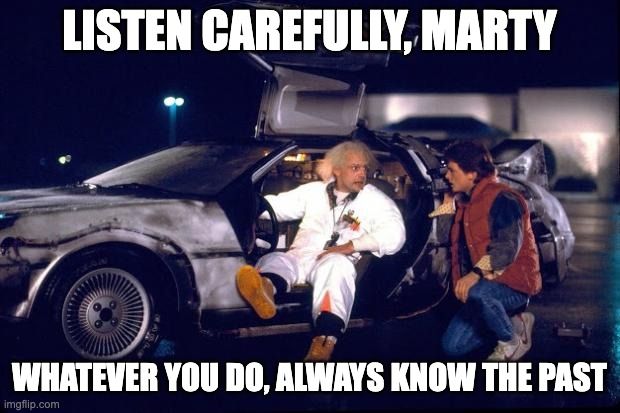No one knows the future, some people know the past

Although I studied math & computer science in college, I was a bit of a history nerd. What drew me so strongly to studying history was the idea that the future is somewhere in between a rhyme and a repetition of history. This same idea guides how I think about venture investing today.
Why "why now"?
A key question in deciding whether or not to make an investment is "Why now?". To understand why this matters, let's attempt to break down the predictive variables in venture outcomes. It could look something like this:
outcomes = f(timing, idea, team, execution)
It turns out, that the timing variable has an outsized influence on company outcomes. Let's take a look at a category I've been fascinated with recently: collectibles. In the last few years, physical collectibles marketplaces like GOAT (a Matrix portfolio company), StockX, and Whatnot have ballooned in popularity. So have digital collectibles marketplaces like OpenSea, the defacto front page of the NFT boom.
There are several drivers behind this shift. From a macro perspective, a low-interest-rate environment has pushed the search for yield further out into the risk curve. From the vantage point of the average retail investor, tales of eye-popping returns, drop culture going mainstream, or Matt Levine's boredom markets hypothesis all make for reasonable explanations.
What's noteworthy here is that you would be hard-pressed to find any of these macro or micro trends at play a decade ago. Consequently, very few of the companies that were started prior to these shifts reached any scale. According to Crunchbase, there were over 150 companies in the collectibles category that started between 2010 and 2015. The average consumer today would not recognize any of them.
In 2015, Bill Gross, founder of the Idealab incubator, tried to quantify the impact of timing on startup success. He scored 100 Idealab companies and 100 non-Idealab companies on 5 attributes: ideas, team, business model, funding, and timing. His estimate was that the timing variable accounted for 42% of why companies succeeded.
A simple framework for answering "why now?"
There are two components to having a compelling why now:
- What failed in the past?
Failed ideas are the most instructive. They are a definitive body of experiments we can learn from. I have written before about how I think about human society as a set of nodes computing the future. Failed ideas are the output of one entrepreneur's computation of a possible future up to that point. They are abstractions to build upon. There's a lot of talk in entrepreneurial circles about standing on the shoulders of giants. The undiscovered giants are the ideas that never broke out. - What has changed?
The second part to having a convincing “Why now?” is demonstrating that there is a clear catalyst enabling an idea. We tend to think of catalysts as macro waves: rise of the cloud, emergence of a new platform e.g. VR, AR, regulatory change, etc. However, simpler shifts such as increased consumer awareness also matter for timing.
Some of my most memorable founder meetings have revolved around these two points. There are no right or wrong answers, just answers that demonstrate that a founder has thought a lot about this.
The startup journey: a test in observation
There's a subtler reason why I place so much emphasis on knowing the past. When I meet a founder who has a strong grasp of their category's past, they almost always have a strong grasp of present opportunities. The skill that matters is simply the ability to notice what is driving an industry. In this sense, the startup journey can be thought of as a test in observation. Observing the past, observing the present, and noticing where shifts are happening.
Building a startup is hard. It's hard to predict the future. But, it’s easier to know the past. That is one way to give yourself a leg up.